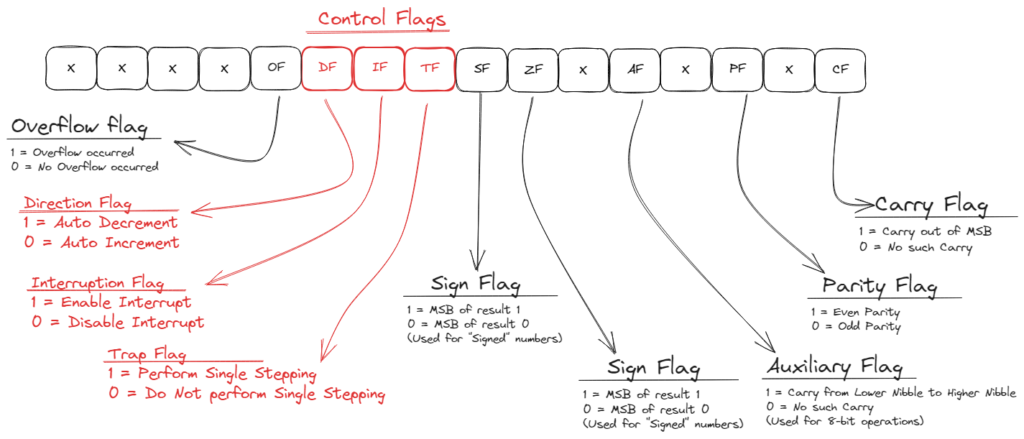
The different categories of registers in the IA-32 architecture along with examples and explanations of what each register does:
- General Registers:
- EAX (Accumulator Register): Used for arithmetic and logical operations. It is also the primary register for I/O operations.
- EBX (Base Register): Often used as a base pointer for memory access.
- ECX (Counter Register): Frequently used as a loop counter.
- EDX (Data Register): Often used for input/output operations and integer multiplication and division.
- ESI (Source Index Register): Used as a source index for string operations and array manipulation.
- EDI (Destination Index Register): Used as a destination index for string operations and array manipulation.
- ESP (Stack Pointer Register): Points to the top of the stack, used for managing function calls and local variables.
- EBP (Base Pointer Register): Used as a base pointer for stack frames and accessing function parameters.
- EIP (Instruction Pointer Register): Holds the memory address of the next instruction to be executed.
- EFLAGS (Flags Register): Contains the processor status and control flags such as carry, zero, and sign flags.
- Control Registers:
- CR0 (Control Register 0): Controls the processor’s operating mode, memory management, and cache.
- CR2 (Control Register 2): Holds the page fault linear address.
- CR3 (Control Register 3): Contains the physical address of the page directory table used for memory translation.
- CR4 (Control Register 4): Enables various processor features like virtualization and protection.
- Segment Registers:
- CS (Code Segment Register): Holds the starting address of the current code segment.
- DS (Data Segment Register): Points to the current data segment.
- SS (Stack Segment Register): Points to the current stack segment.
- ES (Extra Segment Register): Used for additional data segments.
- FS and GS (Additional Segment Registers): Additional segment registers for special purposes.
These registers play a crucial role in assembly language programming. They are used for various purposes like storing data, managing program flow, accessing memory, and controlling the behavior of the processor. Understanding and efficiently utilizing these registers is key to writing efficient assembly language code.